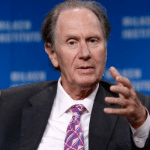Hershey is embracing employee advocacy programs as a way to pull back the curtain on life at the company, helping to improve recruitment, retention and reputation. The giant chocolatier has devoted an Instagram account (@HersheyCompany) to celebrate its employees, who in turn use the platform to celebrate the company. Here are some examples of successful posts, as well as four tips to keep in mind when crafting your own advocacy program.
Internal Communication

The Epic List of PR’s Daily Challenges (And How to Overcome Them)
July 24th, 2017 by Diane SchwartzReality checked in with me recently when a few parents on my son’s rowing team, knowing my affiliation with PR News, asked me to write the press releases for the club. Sure, it’ll be easy,… Continued
Got an Extra $250k in Your PR Budget?
July 5th, 2017 by Diane SchwartzWhen I ask my friends in PR what they’d do with a bigger budget, their first instinct is to smile that “yeah, right!” smile. It’s hard enough to keep the budget they have much less… Continued

How MillerCoors Uses Video for Internal Communications With Employees and Distributors
June 26th, 2017 by Seth ArensteinIn the upcoming Arthur W. Page Society New CCO podcast, MillerCoors CCO Pete Marino talks about the company’s internal video channel MCTV, among other topics. PR News was provided an advance copy. In an interview with us, Marino expands on MCTV as well as what keeps him up at nights.

4 Ways to Change the Paid, Owned and Earned Media Structure
June 15th, 2017 by Brooks Thomas, Southwest AirlinesIf the lines between paid, owned and earned media have become blurred, why is the internal structure at most organizations still so linear? In this commentary, Brooks Thomas, social business advisor with Southwest Airlines, argues for a more integrated approach and provides four tips for smaller organizations looking to bust down the silos between those three types of content.

How Not to Be Uber: Spot Unconscious Biases in Your Organization
June 15th, 2017 by Sophie MaerowitzUber is facing another PR crisis after a June 13 sexist boardroom exchange led to the ouster of board member David Bonderman. This shows Uber’s discriminatory culture is still deeply ingrained at the highest levels, according to Jessica Fish, senior consultant at Leader Networks. And the incident serves as a reminder for communicators to examine their own personal beliefs and workplaces for implicit and unconscious biases about race and gender long before they are exposed in a public setting.
Next Time You’re at an Industry Event, Apply These 5 Simple Rules
June 12th, 2017 by Diane SchwartzIn the course of your career, you’ll have attended dozens if not hundreds of industry events where – if you’re like most human attendees – you’ve exchanged business cards as if by rote, refilled your… Continued

3 Internal Communications Principles Steve Harvey Missed in ‘Don’t Talk to Me’ Memo
May 15th, 2017 by Sophie MaerowitzA memo that reads,”For your eyes only?” Not in showbiz. On May 10, Chicago media blog RobertFeder.com leaked a harshly worded internal memo sent by talk show host Steve Harvey to all “Steve Harvey Show” employees at the start of this year’s season. The memo airs Harvey’s grievances around a lack of privacy on set and requires employees to make an appointment with Harvey prior to any direct contact. “IF YOU OPEN MY DOOR, EXPECT TO BE REMOVED,” the memo reads, before listing several other studio locations Harvey claims to be regularly “ambush[ed]” by NBC staff.

One Change Management Principle Trump Skipped in the Comey Firing
May 11th, 2017 by Ian James WrightPresident Trump’s dismissal of James Comey as director of the F.B.I. May 9 would have been highly controversial no matter how it happened. But how to work within a scenario like that to ameliorate stakeholder dissatisfaction is a major facet of what we as communicators should practice—and it’s a facet that seems to have been neglected by the administration’s communications arm.

How to Assess Stakeholder Attitudes About Change
April 17th, 2017 by Jaya Koilpillai BohlmannIn this second of a three-part series about the PR pro’s role in communicating change, the author discusses how to assess what attitudes your stakeholders have regarding change. This is easier said than done as attitudes likely will differ between groups of stakeholders, regions and professions. Owing to its importance and sensitivity, change requires communication that is multi-dimensional. This is a time for two-way communication.
